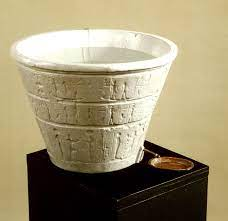2.Pertinent information - K-Division-2021-2022-Even/Repo-03 GitHub Wiki
Mechanical clock
Mechanical clock comprises an oscillating mechanism that marks the passing of time,and an escapement that counts its beat.until the invention of mechanical clock medievel days were divided by passing of the sun.there were parts to day but not equal hours.as the use of mechanical clock spread from italy across western europein 14th century,a standardisation and equalisation of time began.
History of timekeeping devices:
For thousands of years,devices have been used to measure and keep track of time.The current sexagesimal system of time dates to approximately 2000 BC from the sumerians. The Egyptians divided the day into two twelve hour periods,and used large obelisks to track the movement of sun.They also developed water clocks,which were probably first used in precinct of Amun-Re[its a temple in Egypt],and later outside Egypt as well.They were employrd frequently by Persians and the ancient greeks,who called them clepsydrae.The Zhou dynasty is believed to have used the outflow water clock around the same time.
Water clock

Other ancient time keeping devices include the candle clock,used in ancient china,ancient japan,england and Mesopotamia.the timestick widely used in Persia,India and Tibet as well as some parts of Europe.and the hourglass,which functioned similar to water clock.The sundial,another early clock,relies on shadows to provide a good estimate of the hour on a sunny day.it is not so useful in cloudy weather or at night and requires recalibaration as the seasons change
Sundial clock

The earliest known clock with a water-powered escapement mechanism,which transferred rotational energy into intermittent mptions,dates back to third century BC in ancient Greece. Chinese engineers later invented clocks incorporating mercury powered escapement mechanisms in the 10th century,followed by Iranian engineers inventing water clocks diven by gears and weights in the 11th century.
The first Mechanical clocks,employing the verge escapement mechanism with the balance wheel or a foliot timekeeper,were invented in Europe at around the start of 14th century,and became the standard time keeping device until the pendulum clock was invented.The invention of main spring in the early 15th century allowed portable clocks to be built.but these were not very accurate until the balance spring was added to the balance wheel in mid 17th century. first mechanical clock
Components and sub-components needed for our project
Cardboard,wall clock machine,glue,gear,spring mass gear:clock gears are basically made of four parts:the wheel,arboue,pinion and pivot.the wheel is toothed that turns hooking the other wheels with its teeth.

Arbor is axel of the gear.the pinion is a small wheel held to main wheel by arbor,which is driven by other gears.

Working principle
Mechanical clocks tell time using gears.they have two important parts:a mainspring and a pendulum.Mechanical clocks are wound with the key and this tightens the main spring.as the main spring unwinds,its energy turns gears which cause the hands to move.the pendulum keeps time and ensures that the gears move at the right pace:second by second....they can run off of the energy generated by their springs and weights.the most basic principle on which every clock works is oscillation. Mechanical clock technology preceded quartz movements by nearly a thousand years.Unlike their digital and quartz counterparts,mechanical clocks don't depend on a battery to keep time.Insted,they harness the energy stored in a wound spring-which is why all mechanical clocks must be wound in order to continuously keep accurate time.Every mechanical clock needs energy in order to run.Winding your clock actually winds an internal mainspring-and when the main spring slowly unwinds,it puts a series of parts in motion which results in the turning of gears.Perhaps the most important component inside a mechanical clock is known as the escapement.The escapement regulates the release of stored energy into a predictable curve,which translates into the motion of hands around the dial.The final element in the escapement is an oscillator,usually a balance wheel or pendulum.The rate of the oscillator is constant,resulting in the controlled release of energy stored in the mainspring.Each swing of pendulum or balance wheel releases a tooth on the escapement's gear,which allows the clock geartrain to advance by a fixed amount,moving the clocks hands forward at stady rate.
Resource
LEGO clock lego